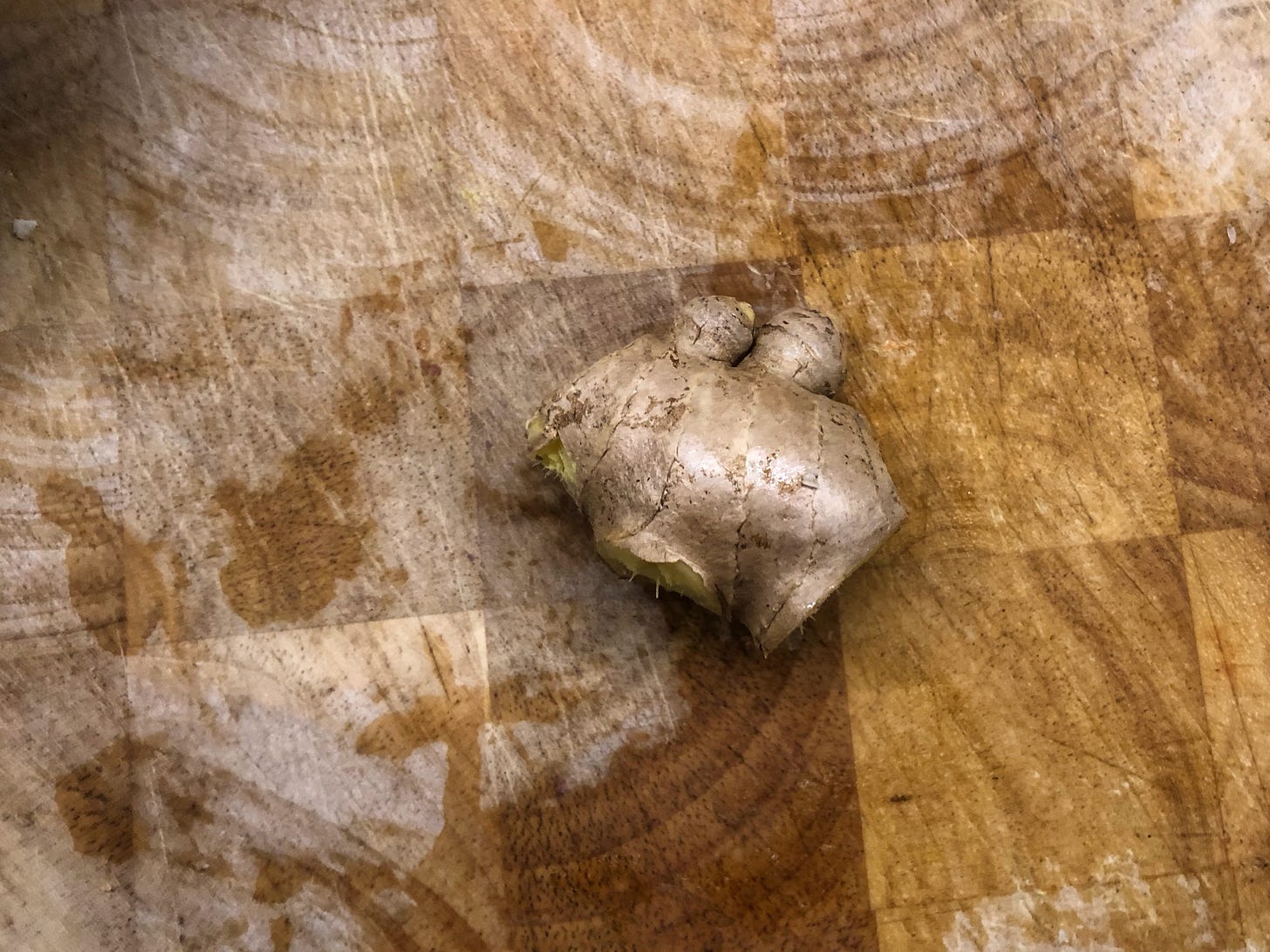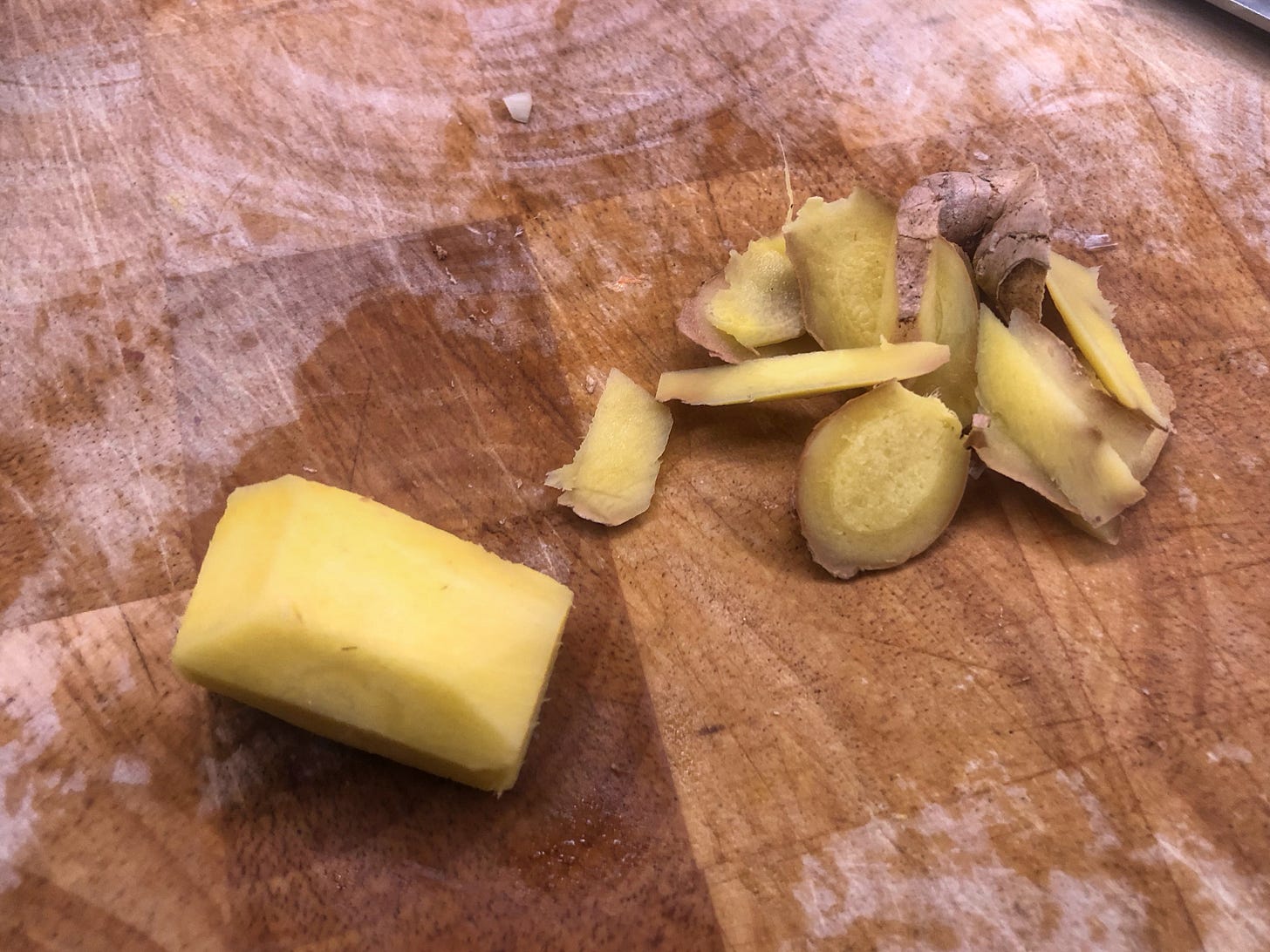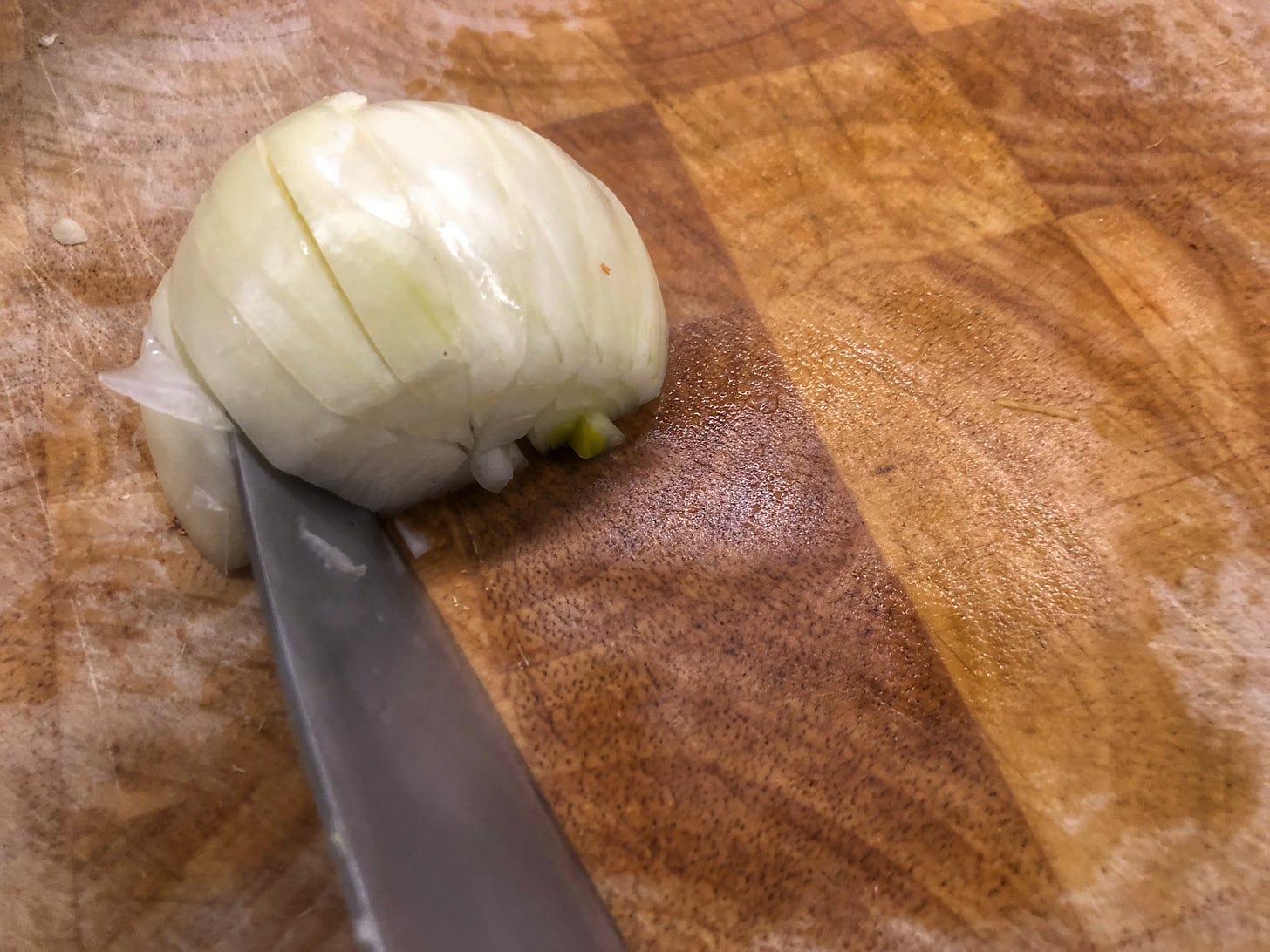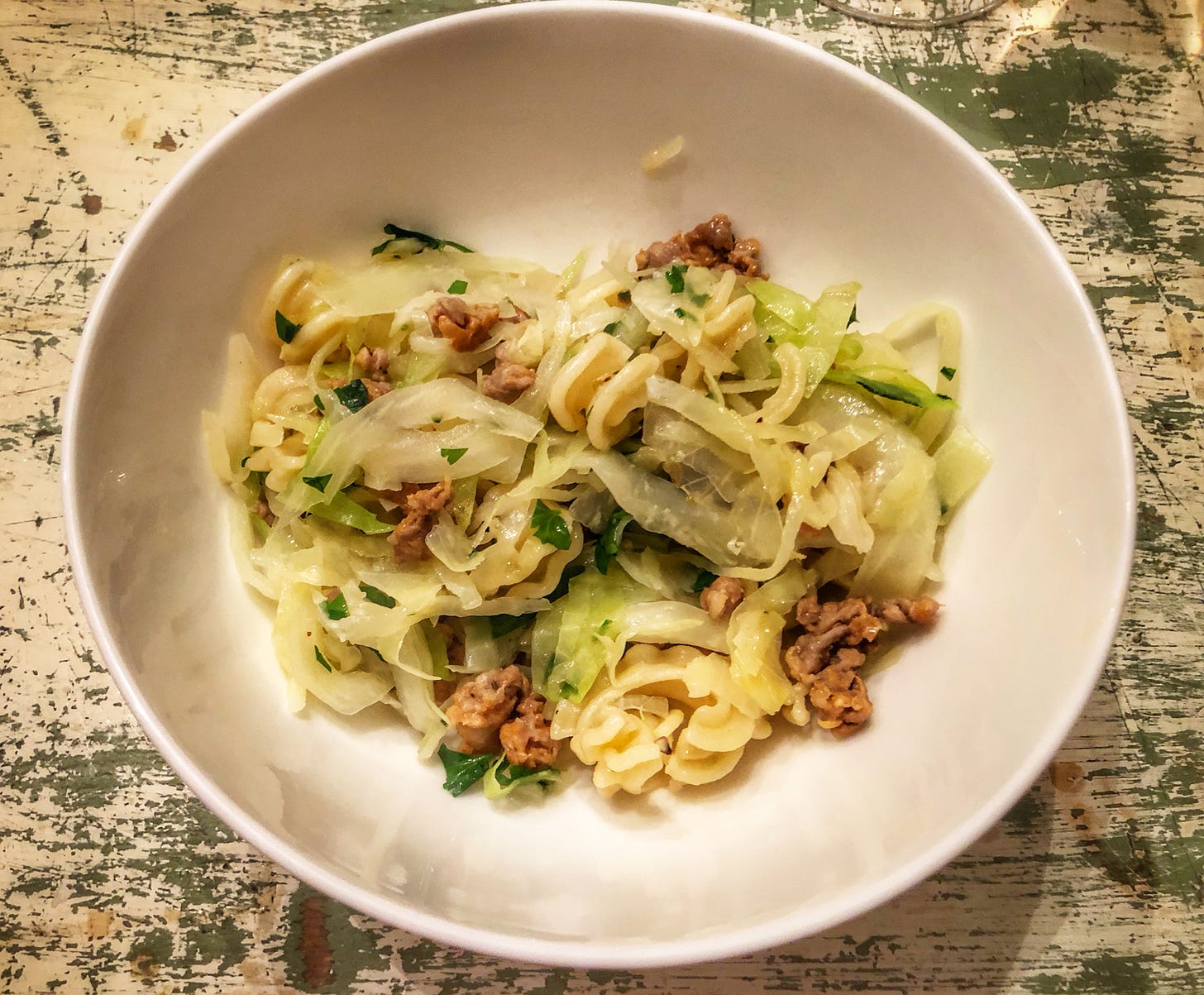33. Govern Yourself Accordingly
Is there a right way to do everything? Or anything?
At the beginning of February, I was invited by this newsletter’s consiglieri, Chris Frey,1 to take part in the latest instalment of Trampoline Hall. It calls itself “a barroom lecture series” in which, as that description implies, people deliver lectures in a barroom. The twist is that the subject of the lectures must be something the lecturers are passionate about but have no professional connections to. I could not, for instance, give a lecture about what to look for in an aspiring copywriter’s portfolio.2
My lecture, entitled Hot Dog vs Hotdog, was about food, surprisingly, but also about pedantry and the tension that exists between what is and what ought to be. It’s probably easiest just to let you listen to it and see the slides I presented.
In the Q&A that followed, there were a lot of taxonomic questions. “Is a hot dog a sandwich?” of course, but also, “Is a hot dog that has been split in two and put between two slices of bread a sandwich?” and “Is an Italian sausage a hot dog?” And a lot of questions about orthodoxy and whether I was for or against different hot dog toppings, to which my answer was often, “I’m against it for me, but I don’t care what you do.”
It somewhat surprised me to hear myself saying that. I don’t think I would have to travel back too many years to find a version of me that would make blanket pronouncements about what was and wasn’t acceptable to put on a hot dog for everyone, without exception. I imagine that’s a common arc as one ages out of youth and enters middle age. Chris and I used to joke that our days of possibly being proclaimed a prodigy at anything had ended when we weren’t looking. (Consigliere note: At the age of 25, to be exact.) Now it seems that my days of being a doctrinaire have also passed. Maybe it’s wisdom; maybe it’s not having the energy to police everyone else. Whatever the reason, I am now content to let you do you.3
That’s not to say I no longer have strong opinions about, for example, what are and aren’t proper ingredients in a club sandwich. I definitely do.4 In fact, I often surprise myself by how conservative my preferences are for foods like shrimp cocktail5 and sushi,6 to give two more examples. But I understand now the limits of those preferences.
I thought of this the other day when I was about to mince some ginger. Actually, that was when I thought of a tweet from Jen Agg that I can no longer find. In it, she reminded home cooks that Gordon Ramsay wasn’t going to appear suddenly to yell at them if they chopped something the “wrong” way.7
It was a truly liberating thing to read. From that point on, I no longer carefully peeled ginger with the edge of a spoon, as I had read countless times that you are supposed to in order to minimize waste. Instead, I just square up the ginger by cutting all the odd knobs off and throwing them out.
It is unapologetically wasteful. In a professional kitchen, it’s very possibly a offence that could earn you a yelling-at.8 But I don't cook in a professional kitchen and if I want to waste what was probably 13 cents of ginger, that’s my prerogative. (This may not seem like as much of a revelation to you, but having immersed myself in finding the “right” way to do things, it was an immense burden lifted.)
In the same vein, when I’m dicing an onion, I often forgo making partial vertical and horizontal cuts in it before cutting across into dice. Although it yields very uniform results, it’s fussy, especially if your knife needs sharpening.
Instead, I make one set of radial cuts before cutting across into dice. Are the pieces from the outside of the onion smaller than the ones closer to the centre? They sure are. Is Padma Lakshmi going to tell me to pack my knives and go? Not a chance.
Of course, there are methods of cutting and cooking that are better than others. I’m not making some relativist argument that whacking at a loose onion willy-nilly is as good as either of the more elegant dicing methods I’ve described. It’s not; you’ll have pieces of wildly varying size that will cook unevenly.9 Different methods have different upsides. Spooning your ginger minimizes waste; squaring it off minimizes annoyance. If you're happy with your results, you've found the right method for you. And if you're not happy with your results, get in touch in the comments or by replying to this email and I'll happily help you figure out what you can do to improve.
What I’m consuming…
Videos by The Yakitori Guy. Yakitori has a special place in my heart because it was the first thing I ate at a Japanese restaurant. Sasaya opened in Toronto in 1978, but I don’t think I went until a few years later when I was ten or eleven. At that age, the prospect of raw fish was downright icky, so my father ordered me yakitori instead.10 And, like a baby bird imprinting on the first thing it sees, my love of yakitori firmly took root.11 A few days ago I finally found a Canadian store that sells the Chef's Press, which was in my 2021 Gift Guide. I noticed they also carried konro, the small charcoal grills used to cook yakitori. And that (apologies for taking you down the rabbit hole with me) reminded me about The Yakitori Guy, whose enthusiasm for yakitori is even several orders of magnitude greater than mine. I haven’t tried many of his techniques, but the meticulous detail of his videos hits right for me.
When the Wholesale Club nearest us closed, I thought I had lost a convenient entree into foodservice shopping for things like small mixing bowls, deli containers, and boxes of Cherry Blossoms and Eat-More bars.
There are other places nearby that sell them, but unlike Wholesale Club, they all very aggressively assert that they are closed to the public and open only to businesses. This week it finally clicked that I am a business. Not a foodservice business obviously, but I am incorporated and have an HST number. So off I went to a nearby Cash-and-Carry to sign up for a membership, mumbling when they asked what kind of business I had. I felt like I was getting away with something as I walked among the takeout containers and giant whisks and 3-litre tins of hoisin sauce. In the end, I walked out with some deli containers12 and nitrile gloves. Contrary to the name, I paid with a credit card and used a cart, so there was neither cash nor carrying involved.13 Some of the quantities aren't practical for home use, but for things like cleaning supplies or workaday kitchen items, there are deals to be had versus shopping with civilians. Also for parties. If you need ten pounds of frozen shrimp, you'll do much better than if you had to buy them at a supermarket. If you have an HST number, I strongly recommend finding one in your area.
What’s on the menu…
Cabbage, sausage, and pasta. On the heels of an entire issue about using up cabbage, I made a recipe from Hugh’s Three Good Things on a Plate by Hugh Fearnley-Whittingstall. It’s a cookbook I’ve had for years but never used. I went a little off-book, adding garlic, parsley, and parm and I don’t regret it one bit. It was another great use of Cascatelli as well. It’s a very simple recipe. Brown your sausage (most any kind should work) and then cut it up. (I opted to remove the sausage from the casing and fry it up as a crumble.) Boil your pasta and, a few minutes before it’s ready, add the sliced cabbage to the water. Drain and mix with the sausage. I’d love to figure out a way to get the sweet, roasty flavour of cabbage cooked in the oven into the dish, but I appreciate the easy cleanup of not using an additional dish to cook it.
Speaking of unused cookbooks, I have a lot of them. Of the eighty or so that are close at hand in the pantry, I would guess I’ve made something from about half of them.

Fittingly, the empty space in the bottom right is because Hugh’s Three Great Things on a Plate is in use. I’ve been toying with creating a more regularly posted feature called Cooking the Books, in which I try using more of my library. I’m not sure exactly what form it would take. There’s a possibility that I could give readers some say in which books get used. I’m not sure. I’m also considering making it available to paid subscribers, which is why it would have a regular publishing schedule. The Plate Cleaner you know and (I hope) love would still be around, coming out at its usual herky-jerky pace. This would just be something on top of it.
This really deserves its own post rather than a footnote, but it cannot be understated how many writing opportunities Chris has given me. From publishing something I wrote about The All-New Dating Game in The Gargoyle in 1988 to The Toronto Standard to Hazlitt to encouraging me to start The Plate Cleaner, Chris has always believed in my writing. Thanks for yet another opportunity, Chris. Everyone should be so lucky to have someone like you in their corner.
And judging from a few of the aspiring copywriters I’ve hired, nor should I.
Thank God all my tweets disappeared when I left Twitter. Because there’s always a tweet to disprove a statement like that.
Bacon, turkey or chicken (preferably real and not loaf), tomato, lettuce, mayo.
Shrimp, cocktail sauce, maybe a wedge of lemon.
Traditional nigiri toppings, no Philadelphia rolls and their ilk, wasabi under the fish, not on the side.
At least that’s the way I remember it. Memory can be such a funny thing. I once spent hours searching for an article by Francis Lam from Saveur about John’s BBQ in Richmond Hill that turned out in fact to be an article from Gourmet about Ho Ho BBQ in Markham.
Please don’t yell at your staff. This is a pro-labour newsletter. Union-busters are kindly requested to unsubscribe.
Although I suppose that if your goal is an extreme textural variation in your onions that I’ve never encountered even once before, it’s the perfect way.
He and my sister later tricked me into eating unagi sushi by telling me it was chicken.
Bird metaphor when talking about grilled bird? OK, Mike.
The good ones: Lung Sang Maple Leaf. IYKYK.
More like “Credit-and-Cart,” amirite?







